Books
Non-fiction
Books: Anti-Semitism and It’s Tentacles
New books are shedding light on our understanding of Jew hatred and the Holocaust. Here is a selection that looks at anti-Semitism in England as well as in the United States, and how Nazi persecution and Jewish survival were complex affairs.
Holocaust: The Nazi Persecution and Murder of the Jews by Peter Longerich. (Oxford University Press, 645 pp. $34.95)
Remembering Survival: Inside a Nazi Slave-Labor Camp by Christopher Browning. (Norton, 375 pp. $27.95)
Rezso Kasztner: The Daring Rescue of Hungarian Jews: A Survivor’s Account (Pimlico) by Ladislaus Löb. (Pimlico Press, 338 pp. $22.95)
The Third Reich in the Ivory Tower: Complicity and Conflict on American Campuses by Stephen H. Norwood. (Cambridge University Press, 352 pp. $29)
Trials of the Diaspora: A History of Anti-Semitism in England by Anthony Julius. (Oxford University Press, 864 pp. $45)
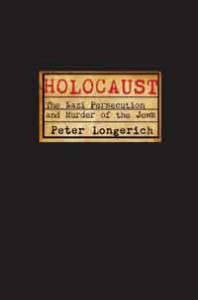 Holocaust by Peter Longerich, director of the Research Center for the Holocaust and Twentieth-Century History at the University of London, argues that Judenpolitik, or anti-Jewish policy, was at the center of the Nazis’ strategy to realize their utopian dream of a racially homogeneous national community, first in Germany and subsequently throughout Nazi-occupied Europe. To rid Europe of its Jews, states Longerich, was not only central to the whole National Socialist movement, but was what gave it its distinctiveness. Therefore, he says, it is pointless to select a single order for a Final Solution, but rather to understand that the escalation from persecution to genocide involved a highly complicated series of decisions that emanated from the Nazi leadership, but whose implementation was left to the interpretation, if not imagination, of the actual perpetrators.
Holocaust by Peter Longerich, director of the Research Center for the Holocaust and Twentieth-Century History at the University of London, argues that Judenpolitik, or anti-Jewish policy, was at the center of the Nazis’ strategy to realize their utopian dream of a racially homogeneous national community, first in Germany and subsequently throughout Nazi-occupied Europe. To rid Europe of its Jews, states Longerich, was not only central to the whole National Socialist movement, but was what gave it its distinctiveness. Therefore, he says, it is pointless to select a single order for a Final Solution, but rather to understand that the escalation from persecution to genocide involved a highly complicated series of decisions that emanated from the Nazi leadership, but whose implementation was left to the interpretation, if not imagination, of the actual perpetrators.
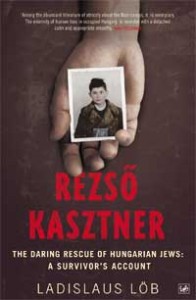 This tragic story is told in Rezso Kasztner by Ladislaus Löb, an emeritus professor of German at the University of Essex in England who, at age 11, was among the 1,620 Hungarian Jews on the so-called Kasztner train, which spent five months at Bergen-Belsen before Eichmann allowed it to depart to Switzerland and freedom. Löb is sympathetic to Kasztner, but attempts to relate fairly the events both in Hungary and in Israel, where Kasztner eventually immigrated. There he was labeled a traitor who collaborated with the Nazis as well as accused of choosing only those close to him as passengers on the train. In a 1954 trial, the judge ruled against Kasztner; soon after his assassination in 1957, the verdict was overturned by an Israeli appeals court.
This tragic story is told in Rezso Kasztner by Ladislaus Löb, an emeritus professor of German at the University of Essex in England who, at age 11, was among the 1,620 Hungarian Jews on the so-called Kasztner train, which spent five months at Bergen-Belsen before Eichmann allowed it to depart to Switzerland and freedom. Löb is sympathetic to Kasztner, but attempts to relate fairly the events both in Hungary and in Israel, where Kasztner eventually immigrated. There he was labeled a traitor who collaborated with the Nazis as well as accused of choosing only those close to him as passengers on the train. In a 1954 trial, the judge ruled against Kasztner; soon after his assassination in 1957, the verdict was overturned by an Israeli appeals court.Kasztner remains a controversial figure, but Löb’s book should help rehabilitate his place among those who tried to save Hungarian Jewry.
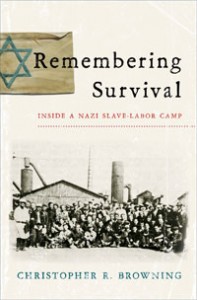 Christopher Browning’s new book, Remembering Survival, adds to his reputation as one of the preeminent scholars of the Holocaust. His book focuses on the factory slave-labor camp, one of the most understudied and least-known phenomena of the Holocaust. Browning examines the Starachowice labor camp from the perspective of its 292 survivors. A small, obscure camp located in the Radom district of the General Government in Poland, Starachowice was critical to munitions production for the German war effort. Thus the Jews employed for slave labor were able to survive so long as they were able to work, despite the ever-present threat of arbitrary killing. Browning not only unsparingly depicts the arbitrary cruelty of Nazi camp leaders but also relates the testimony of survivors who expressed their condemnation of fellow Jews who were seen as receiving preferential treatment in the camps or who held positions of authority first in the Wierzbnik ghetto and later at Starachowice.
Christopher Browning’s new book, Remembering Survival, adds to his reputation as one of the preeminent scholars of the Holocaust. His book focuses on the factory slave-labor camp, one of the most understudied and least-known phenomena of the Holocaust. Browning examines the Starachowice labor camp from the perspective of its 292 survivors. A small, obscure camp located in the Radom district of the General Government in Poland, Starachowice was critical to munitions production for the German war effort. Thus the Jews employed for slave labor were able to survive so long as they were able to work, despite the ever-present threat of arbitrary killing. Browning not only unsparingly depicts the arbitrary cruelty of Nazi camp leaders but also relates the testimony of survivors who expressed their condemnation of fellow Jews who were seen as receiving preferential treatment in the camps or who held positions of authority first in the Wierzbnik ghetto and later at Starachowice.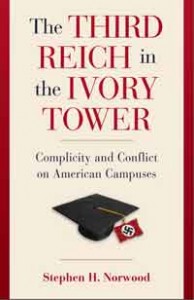 If anti-Semitism was the distinctive characteristic that propelled Nazi Germany, what was the attitude toward Jews in the Allied countries? Stephen Norwood looks at anti-Semitism in the United States in The Third Reich in the Ivory Tower and Anthony Julius examines it in Britain in his Trials of the Diaspora. The Norwood book chronicles the pro-Nazi attitudes on the part of administrators of the Ivy league colleges, elite women’s colleges and a number of Catholic universities, such as Notre Dame, between 1933 and 1940. More than just placing quotas against Jewish students, many top academic institutions displayed their pro-Nazi affinities by encouraging their students to visit Nazi Germany on exchange programs, refusing to hire Jewish refugee scholars fleeing Hitler and punishing both faculty and students who protested the school’s friendly relations with the Nazi regime. Norwood concludes that academic leaders such as James Conant of Harvard University in Cambridge, Massachusetts, and Nicholas Murray Butler of Columbia University in New York embraced Nazi Germany partly because they associated Jews with Bolshevism and partly by viewing Hitler’s Germany and Mussolini’s Italy as bulwarks against the spread of Communism.
If anti-Semitism was the distinctive characteristic that propelled Nazi Germany, what was the attitude toward Jews in the Allied countries? Stephen Norwood looks at anti-Semitism in the United States in The Third Reich in the Ivory Tower and Anthony Julius examines it in Britain in his Trials of the Diaspora. The Norwood book chronicles the pro-Nazi attitudes on the part of administrators of the Ivy league colleges, elite women’s colleges and a number of Catholic universities, such as Notre Dame, between 1933 and 1940. More than just placing quotas against Jewish students, many top academic institutions displayed their pro-Nazi affinities by encouraging their students to visit Nazi Germany on exchange programs, refusing to hire Jewish refugee scholars fleeing Hitler and punishing both faculty and students who protested the school’s friendly relations with the Nazi regime. Norwood concludes that academic leaders such as James Conant of Harvard University in Cambridge, Massachusetts, and Nicholas Murray Butler of Columbia University in New York embraced Nazi Germany partly because they associated Jews with Bolshevism and partly by viewing Hitler’s Germany and Mussolini’s Italy as bulwarks against the spread of Communism.Great Britain’s worst nightmare, however, was that negotiating with the enemy on behalf of saving Jewish lives might lead the Nazis to allow millions of Jews to be free and demand entry to the one place that would accept them, Jewish Palestine. From the Evian Conference in 1938 to the White Paper of 1939 to the Bermuda Conference of 1943, this was always an unacceptable alternative, lest it alienate the Arabs. It was not only the Nazis, therefore, but also Allies, such as Great Britain, that prevented those, like Kasztner, from successfully negotiating the rescue of European Jewry. —Jack Fischel
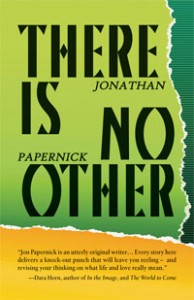
by Jonathan Papernick. (Exile Editions, 179 pp. $17.95)
Jonathan Papernick had worked as a journalist in Israel, and those experiences, transformed into short stories, turned The Ascent of Eli (Arcade) into an impressive first collection. A novel, Who By Fire, Who By Blood (Exile Editions), followed in 2007, and Papernick soon joined the ranks of Dara Horn, Nathan Englander and Jonathan Safran Foer as a young Jewish writer worth watching.
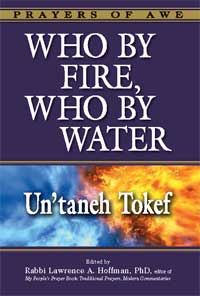
Who by Fire, Who by Water: Un’taneh Tokef
Edited by Lawrence A. Hoffman. (Jewish Lights, 253 pp. $24.99)
Readers of this collection of more than 41 essays will either learn more than they ever wanted to know about the piyyut, liturgical poem, “Un’taneh Tokef,” recited on the High Holidays (for instance, it is not recited in many Reform synagogues because they are troubled by its theology of God standing in judgment and deciding “who will live and who will die”). Or they will be amazed by the varying attitudes toward the poem’s 39 verses.










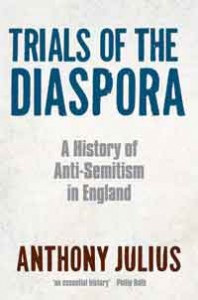
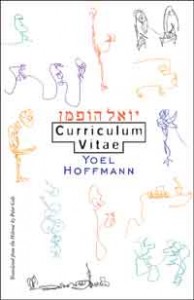
 Facebook
Facebook Instagram
Instagram Twitter
Twitter
Leave a Reply